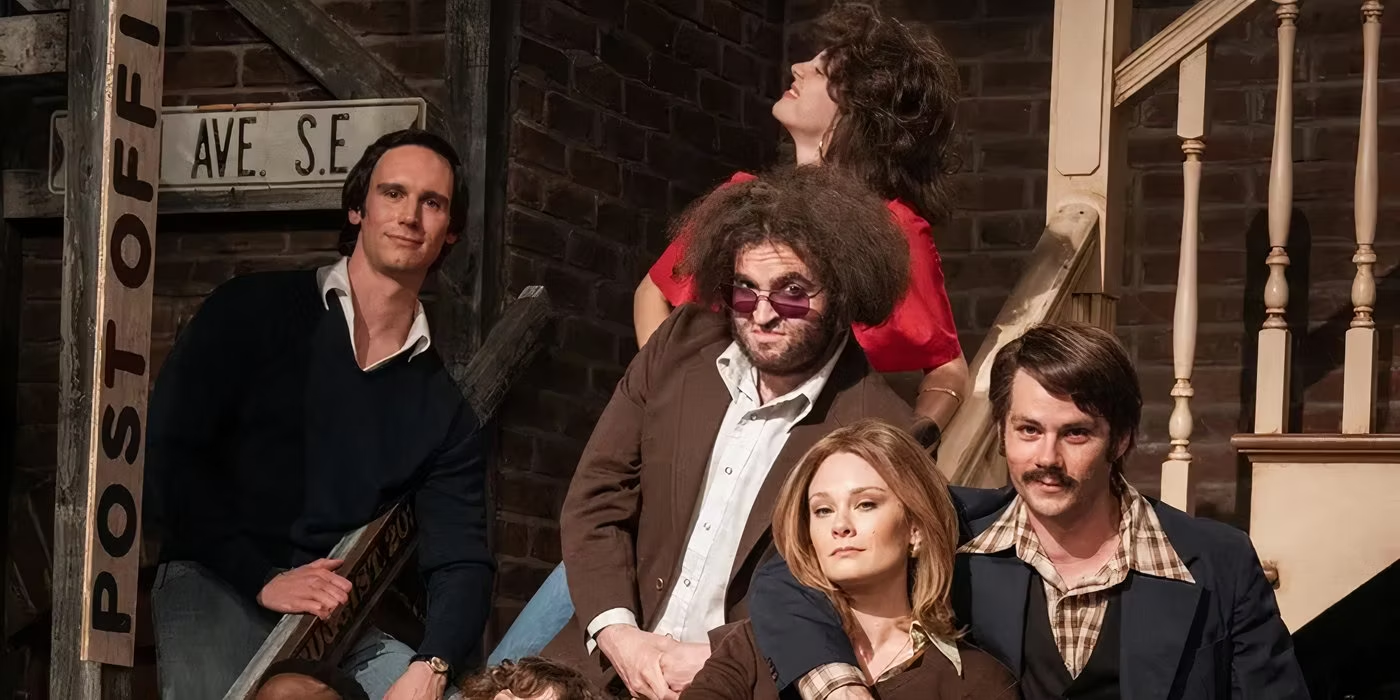
Saturday Night Live has become a television landmark and staple of American entertainment, something you expect to always be around like Madison Square Garden or the Hollywood sign. Things weren’t always so stable for the show as its inception was a risk and a chance that was taken on young, innovative comedians looking to make a mark for a new generation. That story has finally made its way to the big screen.
Saturday Night begins at 10:00pm on October 11, 1975, as comedy writer Lorne Michaels (Gabriel LaBelle) makes his foray onto network television with a new concept for a late night show. The live sketch comedy series features a group of young comedians and writers seeking to upend the traditional notion of how TV is presented on NBC. Before they can do so, they have organize amongst themselves and unite to change the hearts and minds of the old executives who expect them to fail.
Saturday Night seeks to contextualize the chaos that went into launching the now institutional late night sketch comedy show and perhaps the strongest way it conveys this to the audience is through its camera movement. From the very beginning of the film, director of photography Eric Steelberg utilizes a kinetic camera that tracks through the studio as Lorne tries to wrangle his writers, actors, and guests for the shows dress rehearsal in advance of going live. The frenetic movement of the camera creates an immersive experience for the viewer as the messiness and unsurety of what cast and crew were working on comes through in the instability of the lens through which they’re viewing the story. As we progress through the night, and thus the story, as the environment becomes more stable and things begin to settle a bit for the show, so does the camera, editing, and overall visual language of Saturday Night begin to resemble something more conventional as well. The camera movement around the studio also helps to increase the feel of the set’s scale even though the story takes place in one general area. This visual language was a well done approach from Steelberg and director Jason Reitman in communicating character emotions and atmosphere by showing the audience rather than editorializing it through dialogue.
The film’s impeccable production design aides in its ability to set the atmosphere of the time with an authentic 70s feel in the hair styling and wardrobe for its characters. The decision to shoot on film is the final touch in giving Saturday Night a vintage look for the era that feels like a step back through time. The film’s visuals help in making it strong despite a lack of bite when it comes to most of the plot. The majority of the time, we’re watching as the characters deal with trying to organize the show and find their place within the plans for what makes it to air and what doesn’t with the uncertainty of making it to air cleanly driving the conflict more so than any character conflict. This makes it a tedious watch at times until things boil over for Lorne in his interactions with Dick Ebersol (Cooper Hoffman), NBC’s Director of Weekend Late Night Programming and executive Dave Tebet (Willem Dafoe) closer to showtime. The performances are decent and Saturday Night is an interesting look back at history being made in real time, but its value is more in curiosity for fans of the show and television history than for the quality of the film itself.
Image: Universal Pictures

